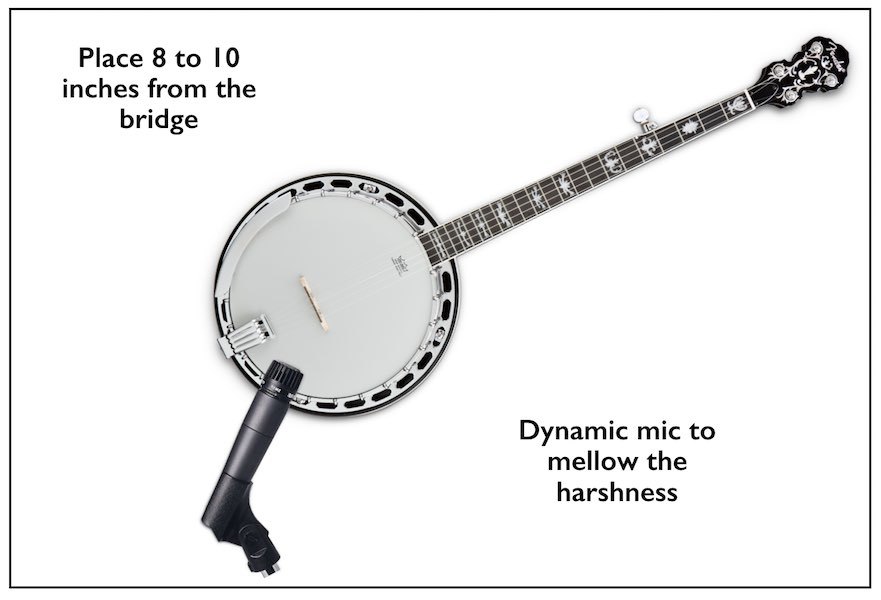- in Production by Bobby Owsinski
5 Techniques For Miking A Banjo

You read the title and I know what you’re thinking – “I’m not doing the type of music that has banjo in it (of course, this doesn’t apply if you’re in Nashville or the South).” You might be surprised when one shows up in your studio one day. After all, Elton John utilized Davey Johnstone’s banjo chops on many a recording. Here’s an excerpt from the 4th edition of my Recording Engineer’s Handbook that shows 5 techniques that will keep you from scratching your head about how to mike it.
Although the banjo is most identified as a country or bluegrass instrument, its origin is actually with African slaves, who brought the instrument to America. Banjos come in four-, five-, or six-string variations, but they all have the same general sound.
Considerations
- The banjo will tend to sound middy and harsh because, after all, it’s a banjo, and they sound middy and harsh by nature! Try a ribbon mic to mellow out the sound a bit.
- Since all the tone comes from the drum-head resonator of the banjo, the techniques used to mike an acoustic guitar will not apply. Banjos don’t resonate like guitars, so it’s better to try to get a good attack sound from the picking. Usually close-miking is a good technique for this.
- Bluegrass banjos tend to be a good deal brighter than the old-time open-back banjos.
- Because bluegrass players usually use metal fingerpicks, there tends to be a good deal of pick noise. Try placing the microphone away from the player’s hand, perhaps below the bridge so that you’re aiming at the skin of the hand, not the pick. Also try aiming directly below the hand at a distance of 8 to 10 inches.
- Most banjos do have some kind of adjustment on the tailpiece that changes the amount of downward pressure the bridge puts on the head. This will have some effect on the attack and tone of the instrument.
- Don’t neglect your microphone preamp. A bluegrass banjo is about as good a torture test of a preamp as there is. The better your preamp, the less trouble you’ll have getting the sound.
Placement

Technique #1: Place a mic 8 to 10 inches away from the front of the bridge, which captures the sound of the whole body (see the figure on the right).
Technique #2: Place a mic facing down about 2 to 3 feet above banjo and a foot in front of the player’s head.
Technique #3: Place a mic 6 to 8 inches from the base of the picker’s hand or just above, depending on the instrument and the picker.
Technique #4: Place two mics from 6 to 18 inches from the front of the banjo. Point one mic in the proximity of where the neck meets the body (or even a little higher up the neck), and then point the other mic in the proximity of the center of the resonator head, where the bridge and the player’s picking hand are. Experiment with the mic pointed at the head, as different angles and slightly different positions can produce quite different sounds.
Technique #5: To reduce the noises that occur from the picking hand brushing against the head, clip an omni lavaliere mic to the strap down by the neck.
Of course there are other techniques for miking a banjo that will work, one of the above 5 will get your in the ballpark immediately so you get to your session quickly.
You can read more from The Recording Engineer’s Handbook and my other books on the excerpt section of bobbyowsinski.com.

